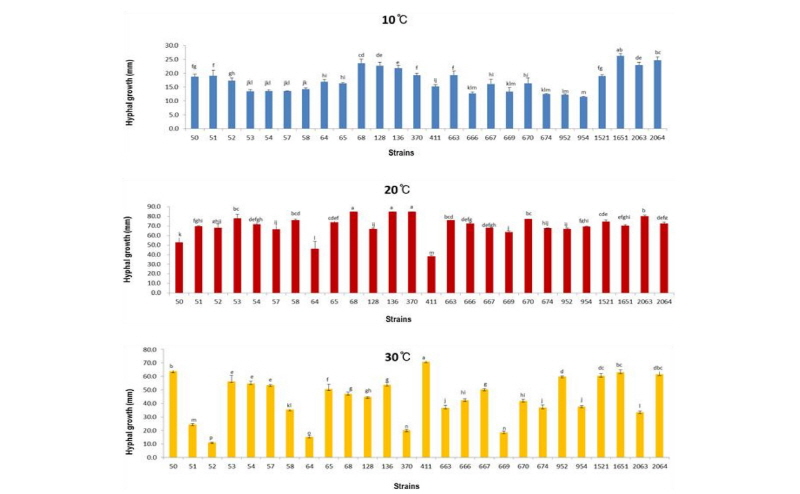Abstract
The cultivation characteristics of 26 wild strains of Lentinula edodes were investigated for their use as breeding material. Strains NIFoS 68, 136, 1521, 1651, and 2064 showed an above average mycelial growth on potato dextrose agar at 10, 20, and 30°C. NIFoS 411 showed the lowest mycelial growth at 20°C, but the highest growth at 30°C. The rate of weight loss of L. edodes cultivated on sawdust (2 kg) ranged from 13.5 to 47.5%, with the highest rates showed by NIFoS 50 (47.5%), NIFoS 128 (34.5%), and NIFoS 54 (34.4%). Fruiting bodies were produced in nearly all (24/26) strains and productivity ranged from 3 g to 446 g/2 kg medium. Temperature was not significantly correlated with mushroom production or mycelial growth. Larger weight loss correlated strongly with fruit yield. In terms of production, NIFoS 50 (446 g), NIFoS 952 (435 g), and NIFoS 53 (421 g) were useful as breeding material. The NIFoS 667 strain was superior in terms of morphology. NIFoS 670 showed the characteristic yellowish- brown color of fruiting bodies.
Acknowledgements
This study was supported by a grant from the Golden Seed Project of ‘Breeding of new strains of shiitake for cultivar protection and substitution of import (213007-05-1-SBH10)’ National Institute of Forest Science, Republic of Korea.
Figures & Tables

Fig. 1. Mycelial growth on potato dextrose agar of Lentinula edodes (26 wild type strains) cultured for 10 days at different temperatures (10°C, 20°C, 30°C). Different letters above the bar indicate significant differences at p < 0.05 according to Duncan's multiple range test (n = 5). NIFoS, National Institute of Forest Science.


